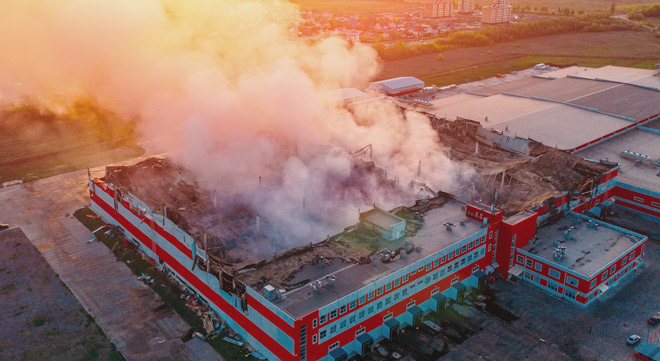Any complacency about South Africa’s seeming insulation against large-scale riots was blown up in July 2021, when violence exploded in KwaZulu-Natal and Gauteng, with more than R50 billion in resulting damage and 340 lives lost. The economic fallout of these riots was enormous because South Africa’s stability was compromised.
The ripple effect of the July 2021 riots has been the hesitancy on the part of the local and international insurance markets to provide cover to this line of business. The international Insurance markets that provided supplementary coverage to the South African Special Risk Insurance Association (Sasria) were also affected.
Sasria offers insurance for four perils in South Africa: terrorism, political, non-political, and labour unrest risks in accordance with the Public Finance Management Act. According to Sasria’s integrated financial report, the insurer paid net insurance claims of R31.5bn following the July 2021 riots, with assistance from the government in the form of a R22bn cash injection.
“The premiums now payable for riot cover, either through Sasria or the international property terrorism and strikes insurance market, have increased drastically. Sasria premium prices increased by 47% as reinsurance costs increased by 600%. Furthermore, Sasria reduced its coverage limits from R1.5bn for assets and business interruption to R500 million,” says Simon Baker, executive head: retail at Aon South Africa.
“It’s now more challenging to obtain insurer interest, with many more exclusions and restrictions added to the coverage provided. The bottom line is there has been a big increase in the cost of riot cover for businesses, as well as a reduction in the limits of indemnity.
“However, in the past 12 to 18 months, we have seen carriers wanting to advance again in providing riot cover solutions for businesses. But as we have seen in other countries across the globe, the political outlook can change quickly,” Baker says.
“As South Africa prepares for a potentially volatile election period, with the election date announced for 29 May, the insurance market could go one of two ways. If the current environment continues and remains steady, with little riot damage up to and beyond the election, we’re likely to see the underwriting regime soften. However, if there is a deterioration, with riots before or after the election, we’re likely to see some insurers withdraw entirely, or certainly seek even more onerous terms.
“The reality is that underwriters typically become more cautious prior to elections – this is a global trend – with more subjectivities imposed. However, for now the market continues to provide solutions for our clients in South Africa.
“Potentially, we may see a reduction in capacity in the short term leading up to elections. However, if there is minimal to no unrest, then this capacity becomes readily available. We have seen the London market pay out cumulative claims in excess of US$1.5bn to our clients following the unrest in 2021, making this a tried-and-tested solution,” Baker says.
Implications of Sasria’s R500m limit for large corporates
Sasria offers cover up to R500m for most classes of risk, subject to predefined premium rates. For many large corporates, these limits may be insufficient, and they will require additional cover in the form of a riot wrap policy.
The riot wrap provides additional coverage for loss of profit, contingent business interruption, and material damage in excess of Sasria limits. The riot wrap cover also provides cover for exclusions of war and civil war that are not covered under Sasria. Essentially, where combined material damage and business interruption values exceed Sasria’s R500m limit, the riot wrap policy will provide extended coverage in respect of the claim once the underlying Sasria (or primary limit) is eroded.
Baker says structuring insurance programmes around riot and political risk needs specialist broking experience of the local and international insurance markets. This risk is becoming increasingly complex and volatile. It has the potential to be financially and operationally devastating if not correctly insured and managed.
“With levels of unrest rising globally, it’s essential to consult with specialist brokers to ensure that riot coverage has been extended to cover all perils and close any gaps that left unchecked in a crisis could be catastrophic,” he says.



